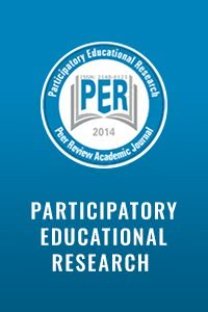Use of Cloud-Based Translation Management Systems in Translation Education
This is a study about the integration of translation technology in a course named Translation of Specific Fields IV given at the Division of Translation and Interpreting in English of Istanbul University. The educator of the course decided to make use of a ‘cloud-based translation management system (TMS)’. The term can be defined as a translation management system where the translation memory system and all other resources for translation are hosted on a remote server and can be accessed via Internet. The purpose of study was to find out whether the use of this type of translation tool in translation courses can help students become self- and life-long learners and what advantages and disadvantages this practice can offer. For this purpose, the author made use of her observations on her own course practices. It was seen that cloud-based TMSs could easily be integrated in translation courses. Advantages are more than disadvantages. The advantages are not only for the students but also for educators and departments. These systems could be used in a way that contributes to self-learning and self-discovery skills of students.
Keywords:
Cloud-based translation management systems, IT translation, technology integration translation technology,
___
- Bernardini, Silvia (2004) “The theory behind the practice: Translator training or translator education?” in Malmkjær, Kirsten (ed.) Translation in Undergraduate Degree Programmes, Amsterdam/Philadelphia: John Benjamins Publishing Company, p. 17-29.
- Canım Alkan, Sinem (forthcoming) “Lisans Düzeyinde Çeviri Eğitiminde Teknoloji Eğitiminin Yeri”, İ.Ü. Çeviribilim Dergisi-I.U. Journal of Translation Studies, 4(7). Kiraly, Donald (2000) A Social Constructivist Approach to Translator Education, Manchester: St. Jerome.
- Marta Chereshnovska (2013). "Training for technical translators: an interview with Uwe Muegge". Available at: http://works.bepress.com/uwe_muegge/82 MotaWord, www.motaword.com
- Muegge, Uwe (2011) “Teaching computer-assisted translation in the cloud: a down-to-earth model”, International Federation of Translators (FIT) XIX World Congress. San Francisco. August 2011. Available at: http://works.bepress.com/uwe_muegge/57
- Muegge, Uwe (2012) “Cloud-based translation memory tools are changing the way translators work and train”, The Big Wave of Language Technology 1.3. Available at: http://works.bepress.com/uwe_muegge/76
- Pym, Anthony (2003) "Redefining Translation Competence in an Electronic Age. In Defence of a Minimalist Approach" Meta: Translators' Journal, 48(4), p. 481-497.
- Pym, Anthony (2007) “Translation technology and training for intercultural dialogue: What to do when your translation memory won’t talk to you”. Available at: http://usuaris.tinet.cat/apym/on-line/translation/2007_tm_talk_to_me.pdf
- Pym, Anthony (2013) "Translation Skill-Sets in a Machine-Translation Age" Meta: Translators' Journal, 58(3), p. 487-503. Sales Force, https://www.salesforce.com/saas/, 3 September 2015
- Zydron, Andrzej, “Cloud computing, SaaS and translation tools”, Multilingual, January-February 2012, p. 20-21.
- ISSN: 2148-6123
- Yayın Aralığı: Yılda 6 Sayı
- Başlangıç: 2014
- Yayıncı: Özgen KORKMAZ
